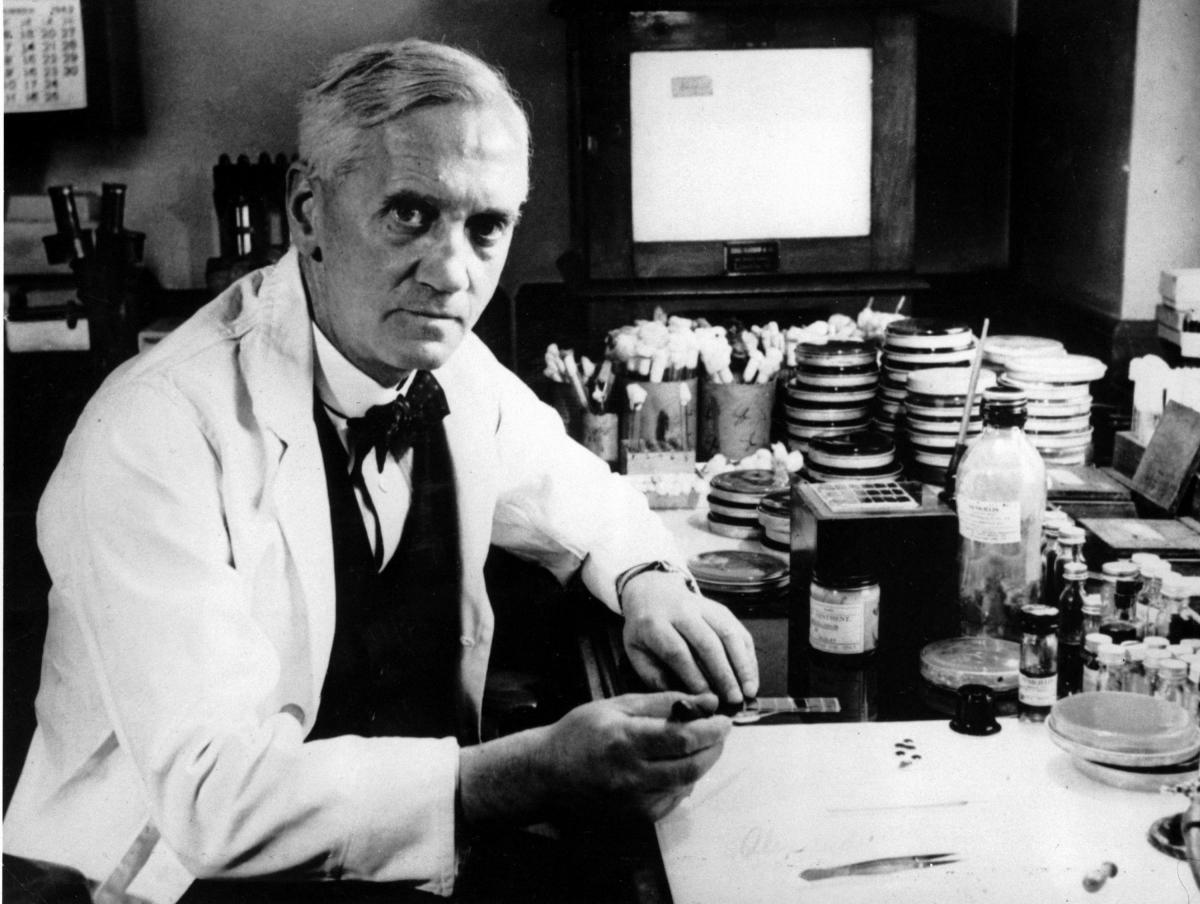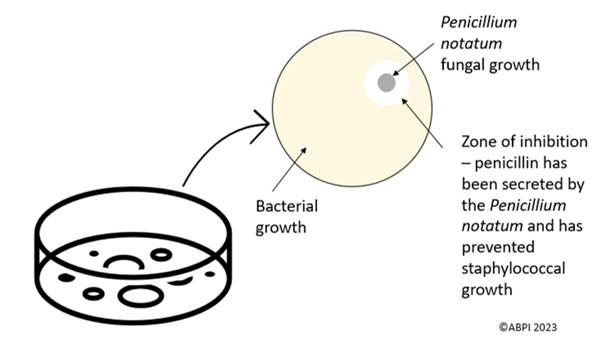This topic takes on average 120 minutes to read.
 Biology
Biology
 Science
Science
The history of penicillin:
Penicillin was first discovered in 1928 by Alexander Flemming, a scientist who was growing staphylococci (a type of bacteria) on agar plates. He came across penicillin by leaving the lid off his agar plates and the windows open whilst he was away on holiday. When he returned, the plates had grown mould with ‘zones of inhibition’ – this means that there were clear rings in the jelly around some of the spots of mould where there were no bacteria, meaning that something had killed the bacteria or prevented it from growing. This mould was Penicillium notatum, but scaling the penicillin up to a useable level was a challenge.


10 years later in 1938 Howard Florey and Ernst Chain did some more work on penicillin. They infected eight mice with bacteria which could usually kill them, but four were given penicillin. The four mice treated with penicillin stayed healthy, but the four untreated mice died. They then moved this theory over to humans by treating Albert Alexander, a 43-year old policeman dying of a blood infection, with penicillin for 5 days. This did reduce the infection, but unfortunately the penicillin ran out before the infection was completely cured and Albert died. Next, Florey and Chain treated a 15-year old boy with penicillin, after an operation which gave him an infection. This cured the boy.
After Florey and Chain’s experiments it was clear the penicillin was valuable in destroying bacteria. But the problem was making enough of it to supply the demand of the soldiers in World War 2. In Britain, all the big laboratories and factories were busy with the war effort. But Howard Florey knew lots of people in America, so the scientists took their mould to the United States where penicillin could be scaled up.
Another key scientist in the discovery of penicillin was Dorothy Hodgkin, who discovered its chemical structure using X-ray crystallography. The knowledge of the structure of penicillin allowed the production process to be refined, allowing higher quality penicillin to be made for a lower price. Without this knowledge, penicillin would not have been as widely available as it is today. Knowledge of the structure has also allowed the mechanism of action to be determined and has allowed new synthetic antibiotics to be made. In 1964, Hodgkin was awarded the Nobel Prize in Chemistry for her contribution.
The ‘golden age’ of antibiotic discovery:
Once scientists were aware of penicillin and its potential, they were able to discover lots of new antibiotics throughout the ‘golden age’ of antibiotic discovery. New antibiotics were discovered in nature (since scientists now knew that fungi, plants and soil were good antimicrobial sources), and antibiotics were also classified into different groups, or classes, depending on their mechanism of action.
As the natural sources started to run out towards the end of the golden age, scientists started turning to the idea of ‘synthetic antibiotics’. These are not found in nature but are instead made in a lab based off known antibiotic structures. Linezolid is an example of a synthetic antibiotic.